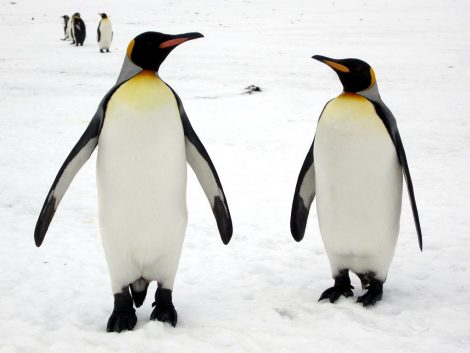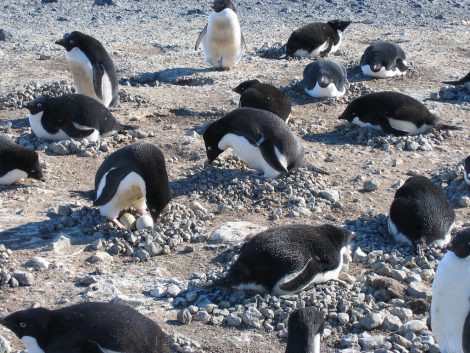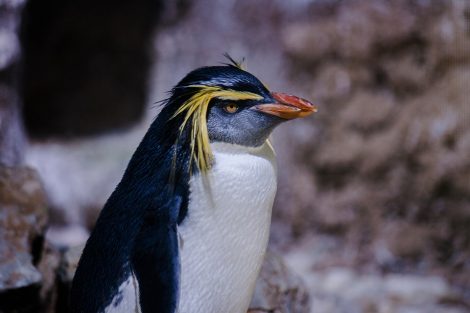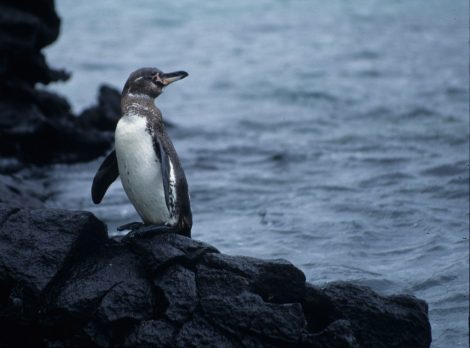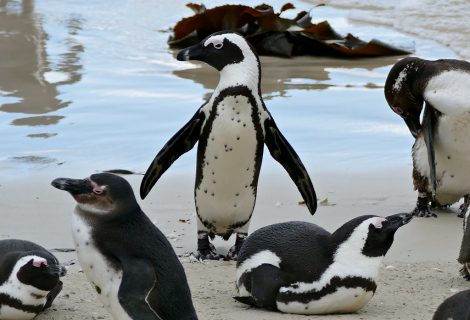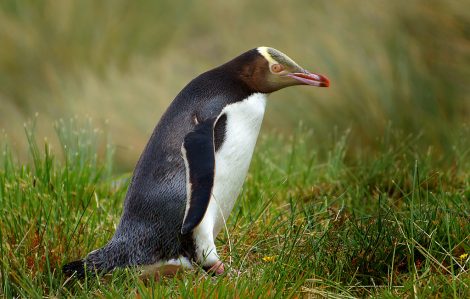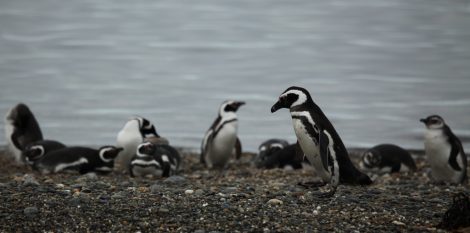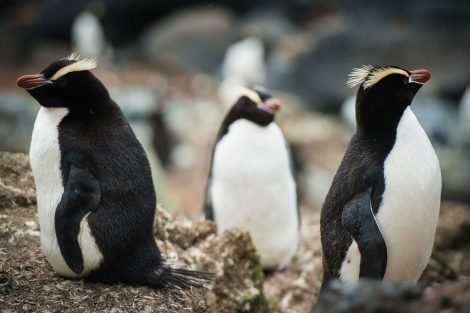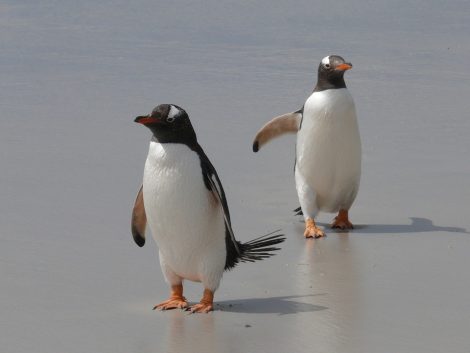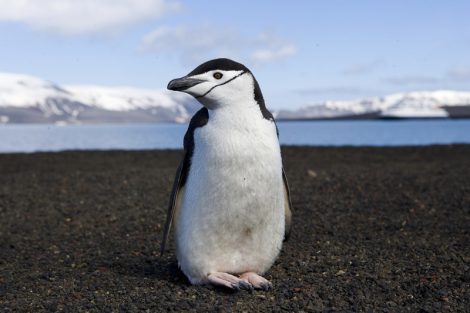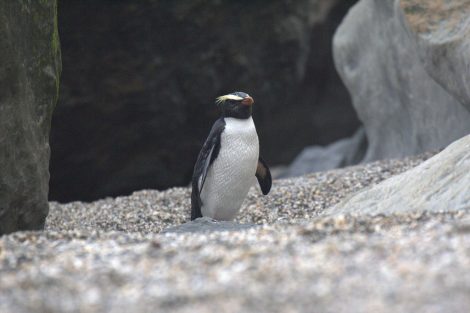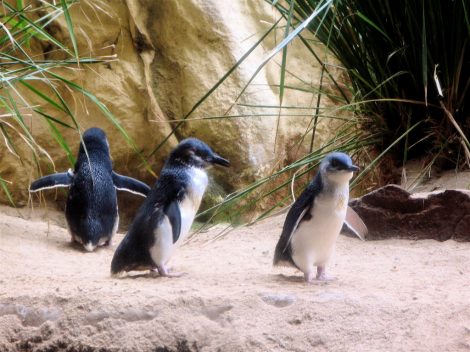There are around 17 species of living penguins. There are other subspecies of penguins that are not added as a different type because of genetic similarity. Penguins live in the southern hemisphere whereas some species live in the Galapagos Islands near the equator.
Not every species of penguins live in Antarctica and frigid conditions. There are certain species that live in the temperate regions. The characteristics, features, size, and look of the penguins vary from their habitation. Emperor penguins are the remarkable flightless marine bird that lives in Antarctica.
The following are the types of penguins,
1) Emperor Penguin:
It is the tallest and heaviest of all the living penguins. An adult emperor penguin can weigh to around 45 kg. And they stand tall up to 122 cm. Emperor penguins live in Antarctica. It is hard to differentiate between the male and female emperor penguins since they have similar plumage and size. The diet of the emperor penguins includes fish, squid, crustaceans, and krill.
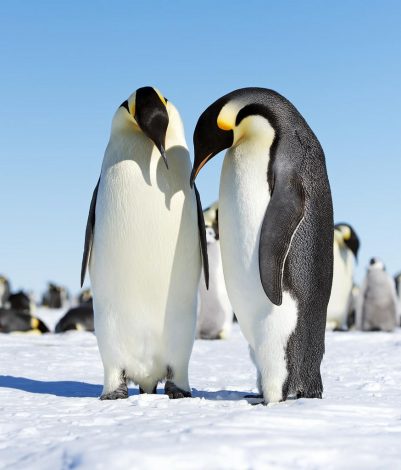
Emperor penguins
The dorsal part of the body is black including the head and has a white front. The yellow patches on each side of the ear make them spectacular. It is the only penguin species that can breed in the Antarctic winter. The blubber present in their body helps them stay in the frigid condition.
They can be on the underwater to about 18 minutes and recent researchers have found that they can stay at around 25 minutes underwater.
2) King Penguin:
It is the second largest after the emperor penguins. They can swim to a depth of more than 300 meters. King penguimeterseed on Sub-Antarctic islands and also in the temperate regions of South Georgia.
They stand about 70 to 100 cm tall and weighs maximum to 18 kg. Male king penguins are heavier than females. The appearance of the king penguins is quite similar to that of the emperor penguins.
King penguins
King penguins have bright orange patches on each side of the ear and white front. The lower bill and the neck have the same bright orange color. They prey on small fish, krill, and squid. Their predators can be an aquatic mammal or seabirds.
3) Adelie Penguin:
Adelie penguins are habitual only to Antarctica. They are the best-suited species to compare with the tuxedo. Their black back and head along with the white front give a royal look of a tuxedo.
A group of Adelie penguins
Being a mid-sized penguin, the Adelie penguin stands tall with a height of 71 cm and weighs maximum to 6.0 kg. They look unique with the white ring around the eyes. And also the black plumage covering the part of the bill Adelie penguins are distinctive from other species of penguins.
One of the unique facts about Adelie penguins is that they build a nest by using stones. They feed on Antarctic krill, ice krill, Antarctic silverfish, sea krill, and glacial squid.
4) Rockhopper Penguin:
Rockhopper penguins are a species of penguins that come under crested penguins and they are sometimes described into three different species. Southern and northern rockhopper penguins have slightly different features from each other.
Rockhopper penguin
They are amongst the smaller species of penguins. The males are bigger than females. The adult rockhopper penguin can be of 20 inches height. The yellow and black spiky feathers on the head keep them unique from other species of penguins. They have a white belly and a black body, red eyes, and orange beak.
The categories of rockhopper penguins are,
-
Southern rockhopper
-
Northern rockhopper
-
Eastern rockhopper
The southern rockhopper penguins are found in the Falkland Islands, Argentina, South America, Chile, etc. The Northern rockhopper penguins are found in the cool regions of the Atlantic Ocean and certain islands of the Indian Ocean. Eastern rockhopper penguins are found breeding in the Campbell Island in New Zealand.
Rockhopper penguins nest in the rocky coastlines irrespective of the subdivided species.
5) Galapagos Penguin:
Galapagos penguins live in the Galapagos Islands and it is the only species of penguins that live on the north of the equator. The adult Galapagos penguin stands with a height of 49 centimeters weighing around 2.5 kg.
They have a black upper part and white underparts. They have the white stripes over the eyes which meet the neck.
Galapagos penguin
Because of their size, they have many predators prey on them like crabs, snakes, rats, cats, etc. Galapagos penguins are the second smallest penguins after the little penguins.
6) African Penguin:
The African penguin is also called jackass penguin and black-footed penguin. They are found near the African waters. They have a pink gland above its eyes which is used for the adaptation of changing temperature. They measure about 3.5 kg in weight and 70 cm tall.
The white plumage is visible from the sides of the head to the front body with a black band. They feed on fish and squid. The African penguins are also called the banded penguins. There are also other banded penguins in the Southern hemisphere, Magellanic and Humboldt penguins.
African penguins
They are most commonly found on the south-western coast of Africa. The African penguins eat anchovies, squid, sardines, and crustaceans. The predators of African penguins are fur seals, sharks, cats, caracals, mongooses, etc.
7) Yellow-Eyed Penguin:
It is the habitat of New Zealand. Yellow-eyed penguins are closely related to little penguins. It is a mid-sized penguin. The adult yellow-eyed penguin measure about 79 cm tall and weighs to a maximum of 8 kg.
Yellow-eyed penguin
The males are larger than the females. They usually nest in the forest or scrubs. They are commonly found in large bays. Yellow-eyed penguins are deliberated to be the world’s rarest species. They can be easily viewed by the tourists on the beaches of Oamaru, Dunedin, etc.
8) Humboldt Penguin:
Humboldt penguins are the habitat of South America. They are similar to the Galapagos, Magellanic and African penguins. They are medium-sized penguins that grow up to 70 cm long and weigh up to 5.9 kg.
They have a fleshy bottom of the bill. The blackhead has the white line above the eyes and it runs to the neck and below. They have a white front body with a black band.
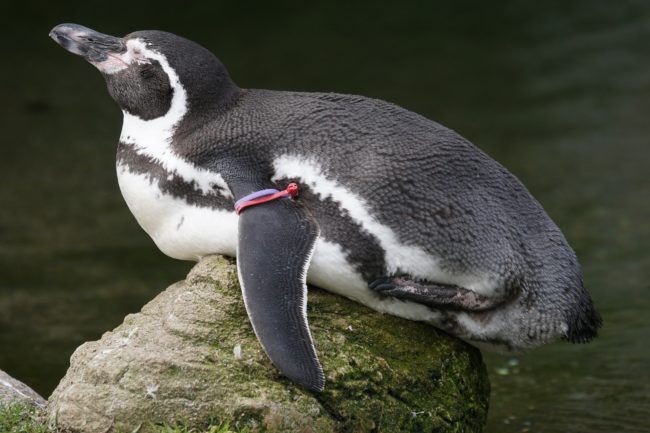
Humboldt penguin
They nest near the rocky coast and build burrows in guano. Humboldt penguins are found on the Pacific coast along with the Magellanic penguins on the central Chilean coast. Humboldt penguins can also be found in many of the zoos around the world.
9) Magellanic Penguin:
Magellanic penguin is a South American penguin found in Chile, Argentina and Falkland Islands. And also sometimes these penguins migrate to Brazil. They are similar to the African, Humboldt and the Galapagos penguins.
Adult Magellanic penguins measure about 76 cm long and weigh around 6.5 kg. The males are larger than the females. They have a black back and white front. There are white and black bands present in the throat and belly. The blackhead has white stripes near the bill and bottom.
Magellanic penguin
They prey on crustaceans, squid, cuttlefish, and krill. An adult Magellanic penguin can dive up to 50 m deep to reach their food.
However, they are found in Argentina and Chile even after threatened by oil spills.
10) Erect-Crested Penguin:
Erect-crested penguins are found only in New Zealand. They breed on Bounty and Antipodes Islands. They are small to mid-sized penguins. It has a black back and white front with a yellow eye and crest. The adult Erect-Crested penguin stands tall up to 70 cm and weighs up to 6 kg.
Erect-crested penguins
Like other species of penguins, the Erect-Crested penguin male is slightly heavier than the female. The yellow feathers over the eyes form the eyebrow with short feathers. They usually feed on krill and squid.
11) Gentoo Penguin:
Gentoo penguins have long-tail and they are found in the Antarctica regions of Tabarin Peninsula and the Falkland Islands. They are closely related to Adelie and Chinstrap penguins. Gentoo penguins can be easily identified by the white stripe on the head above the eyes along with the bright orange bill.
This unique identification helps to differentiate Gentoo penguins from other penguins. They have pale pink webbed feet. They measure about 90 cm long and weigh about 8.5 kg. They are the fastest swimming penguins. Gentoo penguins swimming speed is 36 km/h.
Gentoo penguins
They breed in the ice-free planes in the Sub Antarctic Islands. Fish, crustaceans, and krill are their major foods. Skuas, sea lions, killer whales, leopard seals, and giant petrels are the predators of Gentoo penguins.
12) Chinstrap Penguin:
Chinstrap penguins are found in the Southern Pacific and Antarctic oceans. They also have few different names like a ringed penguin, bearded penguin, stone cracker penguin. They produce a very loud call to communicate with other penguins and chicks.
Adult chinstrap penguin measures about 72 cm long and weighs about 5 kg. Male Gentoo penguins are taller and also heavier than the female penguins. They have a white front and black back.
Chinstrap penguin
The face has white coloration above the eyes and there is a black line on the face followed to the chin. The half blackhead and the combination of the white face look like the Gentoo penguins wearing a helmet.
They prey on fish, squid, shrimp, and krill. Predators of Gentoo penguins include leopard seal, killer whales, brown skua, and kelp gull.
13) Fiordland Penguin:
Fiordland penguins come under the crested penguin species and they are also called Fiordland crested penguins. They are the habitat of New Zealand’s south islands and other outlying islands.
Fiordland penguins are medium-sized penguins with yellow crest and bluish-grey upperparts and white body. They stand tall with a height of 60 cm and weigh about 5.95 kg. They are similar to the erect-crested penguins and Snares crested penguins.
Fiordland penguin
They nest in the roots and rocks of the temperate coastal regions. They mainly feed on arrow squid, crustaceans and less of fish. The predators of Fiordland penguins are stoat, cats, dogs, and rats.
14) Little Penguin:
They are the smallest species of penguins. They are also called fairy penguins, blue penguins or little blue penguins. Little penguins are found in Southern Australia and New Zealand. They measure about 33 cm in height and weigh about 1.5 kg.
Little penguins
The head and the back are blue where the front body is white with the fading white color from the bill. The bill of little penguins measures about 3 to 4 cm long.
Little penguins are found largely in many of the Australian coastal regions.
15) Macaroni Penguins:
The macaroni penguins are found from the Sub-Antarctic to the Antarctic Peninsula. They are closely related to the Royal penguins and are amongst the six species of crested penguins.
It has a unique yellow crest with the blackhead and white front body along with the bright orange bill and pale pink webbed feet. They also have a short feathered tail. They feed mainly on small fish, krill and crustaceans.
It is the large crested penguin. The macaroni penguin stands in the length of about 70 cm and weighs around 6.4 kg. These penguins breed in the densely populated area and are said to be a social animal in their nesting.
Magellanic penguin
The predators are fur seals, leopard seals, killer whales, skuas, giant petrels and kelp gull.
16) Royal Penguin:
They are the habitat of the South Antarctic and the adjacent islands. They are one of the crested penguin species. They measure about 75 cm long and weigh about 8 kg.
Royal penguins
Royal penguins are found only in the Macquarie Island in the Pacific Ocean between New Zealand and the Antarctic. They look similar to the Macaroni penguins except that they have a white face and chin.
They have beautiful yellow coloration. Krill, crustaceans and small fish lie as their food.
17) Snares Penguin:
Snares penguins are the habitat of New Zealand and they are also called Snares crested penguins or Snares Islands penguins. They are mid-sized yellow crested penguins that stand 70 cm tall and 4 kg weight. They have a dark blue head and back body and white front. They have yellow drooping crest over the eyes.
In the base of the red-brown bill, there is a fleshy area covering the bill. They nest in the open forest or coastal rocks. Their colonies are mainly found in the North East Islands and Broughton Island.
Snares Penguin
Their main food is krill and the less of small fish and squid. Their predators are mainly sea lions, leopard seals, skuas, and petrels.
Conclusion:
Penguins spend half of their life inland and half of their life in water. There are plenty of species that are extant. There are confusions in the subdivisions of the species of penguins.
The colonies are widespread near the equator and also in the islands of the southern hemisphere. The species of penguin’s features and characteristics depend upon the region.
References:
https://www.worldatlas.com/articles/how-many-types-of-penguins-live-in-the-world-today.html
http://www.kidzone.ws/animals/penguins/facts10.htm
Image Source:
